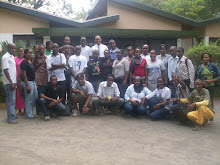Just imagine you wake up one day and no single wildlife specie is anywhere to be seen. All national parks have become bare lands with no single wildlife. No tourist is therefore coming to this country. All tourists’ hotels, lodges, tour safari companies, have all stopped down. No such employments anymore. Everything in the tourism industry has gone. No wildlife. No national parks. The percentage of gross domestic product that used to come from tourism is no longer flowing. Tourism and the rich biodiversity we used to be proud of have become history and our country is no longer a tourist destination. How does click into your mind?
Since time immemorial the largest wild mammals both (carnivores and herbivores) have marked the unique ecosystem of the East African Maasai Steppe. This is the vast reserve of acacias and baobabs that confines the Lake Manyara and Tarangire National Parks in northern Tanzania. The largest predators – the lions, leopards, cheetahs, and the wild dogs have inhabited the area and add value to the rich African biodiversity which has contributed to the economy at macro and micro level. But the bad news is all these are disappearing at an alarming rate.
Major reasons for this disappearance have been human-wildlife conflict and the loss of habitat. A report by one conservation foundation had revealed that the human wildlife conflict in northern Tanzania Maasai Steppe Lake Manyara and Tarangire National Parks has led to the killing of over 85 lions among 200 that inhabits the area in just two years 2004 – 2006.
The human wildlife conflicts have been perpetuated by the rapid population growth particularly in the northern circuit of protected areas, the two mentioned national parks. Establishment of protected areas has been a common approach employed by the government in responding to the problems jeopardizing the well being of wildlife. But as studies have shown, this is no longer a reliable alternative. Protected areas are first of all too small to accommodate the the population of predators. As a result the predators have to go beyond boarders in search for food and in doing so they end up feed on livestock, where the community revenge by killing them.
Fueled by rapid population growth, human migrations into the wildlife habitat in search for arable land and grazeland have been so high over the recent years. The move has for a larger extent destabilized the natural ecosystem that dominated the Maasai Steppe. This can be verified by increased incidences of poaching, overgrazing and human-wildlife conflict.
While the wildlife and the habitat degradation in this important predators site is happening, reports says that the tourism sector has been contributing to the GDP about 13%, the money amounting to US Dollars 1.3 per year. Why then the communities around the protected areas do not feel the privilege of having the wildlife? Or why shouldn't they be on the frontline to take care of this fragile ecosystem that earns the country that much money? Something must be wrong somewhere – more likely with the institutional framework.
Finding the solution on the diminishing wildlife, particularly the carnivores are no simple task. Embarking on intensive conservation while at the same time take into consideration the needs of the local community around are a challenging experience. Behind this problem there are a lot of socio-economic as well as political issues that need to be incorporated before laying a conservation strategy.
The community is the foremost important stakeholder in this battle. Unless this category realizes the potential of wildlife and the habitats, they may offer very little or no cooperation at the the time of implementing the conservation strategies. Frequent incidences of game guards killed by community members is an example of the little cooperation that has graduated into enemity between the two sides – communities and protected areas' authorities.
Currently there are scientists working harder in the bushes to gather information through researches so as come up with strategies that will minimize the problem of diminishing wildlife and degradation of their habitat. More young people are also choosing conservation as a carrier. Efforts to curb the problem are everywhere, but there is a long way to go at least to rescue the rich African biodiversity that has existed for ages. The duty is for everyone. What are you doing?
Written by;
Innocent Kisanga – YET 2011
Sunday, June 26, 2011
Subscribe to:
Post Comments (Atom)


good kisanga, but you didnt tell us something bout the legal framework..say the current wildlife act. What does it really offer to conservation efforts and why are we still experiencing too much investment in our national parks which jeopardizes our wildlife?
ReplyDeleteVery good Kisanga.
ReplyDeleteThis comment has been removed by the author.
ReplyDeleteAs per my knowledge Africa is famous place for the wildlife over there but if animal conservation process is not carried and rise in conflict between human and animals can lead to the situation you describe above.
ReplyDelete